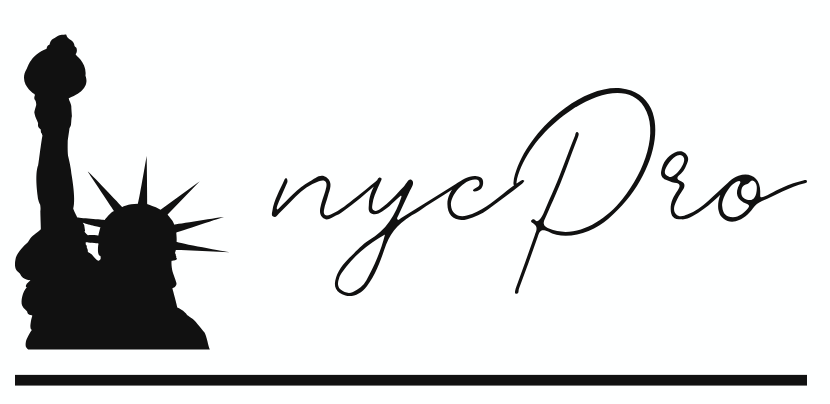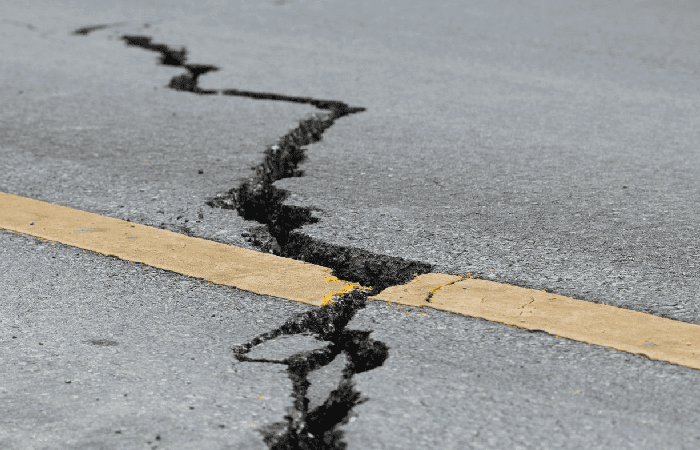Understanding mPox: An Overview

mPox is a zoonotic virus, which was previously called monkeypox, and is a viral zoonotic disease. It creates much concern due to its outbreaks in the most recent time period and the impact it can have on public health. The main object of this article is to clarify mPox closely by detailing the origins, transmission methods, preventives, and treatment options of it.
What is mPox?
mPox is an illness that involves the monkeypox virus, which is under the Orthopoxvirus genus in the Poxviridae family. This disease, which is marked by having fever, headaches, muscle aches, swollen lymph nodes, and a rash that turns into lesions, is a Focal disease, just like smallpox, characterized by vaccine prevalence.
This means that vaccinated people are unlikely to contract it and unvaccinated people are vulnerable. Nevertheless, monkeypox can be very dangerous in some individuals who have weak immunity due to various reasons.
How Did It Start?
The first appearance of mPox in humans is on the record, dating back to 1970 in the Democratic Republic of the Congo. Initially, the disease was mainly in a few places between central and western Africa with probable animal reservoirs like rodents and primates.
However, in the past, sporadic mPox infections in animals were not unusual but recently some people in countries with no prior cases have contacted the virus.
How is it Spreading?
mPox is primarily transmitted through contact with infected individuals and animals' respiratory secretions, lesions, or other bodily liquids. The following are the various ways through which the disease is spread:
- Human-to-Human Contact: This virus can be spread through close contact with someone with the virus. This can occur through sexual intercourse as well.
- Animal-to-Human Contact: Giving an infected animal can cause the virus to be transmitted to the humans who consume the infected animals; this risk is much higher in areas where monkeypox is already established among animals.
- Fomites: The virus is able to survive on the surfaces and materials so the touching of the fomites might also cause the transmission of the virus.
How Can It Be Avoided?
These would be a list of ways of reducing virus exposure. Outlined below are the key prevention measures against mPox:
- Avoid Close Contact: Do not get into close physical contact, including sexual contact, with those who have mPox. This also involves avoiding contact with their personal things like bedding, towels, and clothing.
- Hand Hygiene: Moisten hands often with soap and water or an alcohol-based hand rub, especially after contact with patients or their environment.
- Wear personal protective equipment: Take care of a person with mPox while putting on masks and gloves to reduce the chances of transmission. Open skin should be covered with protective gear upon contacting the lesions from an infected individual.
- Vaccination: Vaccination with a vaccine such as JYNNEOS is indicated in individuals at high risk of exposure to or who have been exposed to pox. The vaccination gives protection against the disease or may reduce the risk of its severity.
- Fewer Sexual Partners: Maintain a smaller number of sexual partners and use barrier protection such as condoms and dental dams at all times when partaking in sexual activities.
- Disinfect Surfaces: Clean and disinfect frequently touched surfaces and objects: Regularly clean high-touch surfaces and objects, especially shared spaces or after having visitors.
Such preventive measures can considerably reduce the risks of acquiring or spreading mpox if practiced by individuals.
Citations:
[1] https://www.canada.ca/en/public-health/services/diseases/mpox/risks.html
[2] https://www.cdc.gov/poxvirus/mpox/prevention/index.html
[3] https://www.hopkinsmedicine.org/health/conditions-and-diseases/mpox
[4] https://www.ncbi.nlm.nih.gov/books/NBK603707/
[5] https://www.cdc.gov/poxvirus/mpox/prevention/protect-yourself.html
[6] https://my.clevelandclinic.org/health/diseases/22371-monkeypox
[7] https://www.canada.ca/en/public-health/services/diseases/mpox/symptoms-management.html
[8] https://www.yalemedicine.org/news/monkeypox-mpox-symptoms-treatment
What is the Cure?
At the moment, there are no specific antivirals available for mPox. There is no specific treatment for mPox. However, supportive care is very important in coping with the symptoms and dealing with the complications that will follow. The treatment also includes:
- Symptom Management: Pain relievers, drinking plenty of water, and taking antipyretics can relieve individuals with the illness.
- Antiviral Medications: In some particular scenarios, like for smallpox, the use of antiviral medications, such as tecovirumtinin (TPOXX), may facilitate the treatment.
- Monitoring: Immediate admittance to healthcare facilities is a crucial step in severe mPox cases, where further medical intervention is probably needed.
What are the symptoms of mPox?
Mpox, previously known as monkeypox, has symptoms that span to varying lengths, usually from 1 to 21 days after exposure and from 2 to 4 weeks in duration. The common symptoms include:
- The rash has several progressive stages: macules, papules, vesicles, pustules, and finally crusts or scabs. The rash can start flat and may develop into blisters that itch or hurt. The rash typically first appears on the face and then spreads to other parts of the body, including the palms, soles, mouth, throat, and genital areas.
- Besides, chills and fever are the most usual initial symptoms, followed by pains in muscles, back, and the head.
- Enlarged lymph nodes or lymphandenopathy are pathognomic to mpox and is in many cases seen prior to the appearance of the characteristic rash.
- Other symptoms may include sore throat, nasal congestion, cough, fatigue, and body aches.
People with weakened immune systems and children, as with severe cases, may even develop bacterial infections, pneumonia, encephalitis, or myocarditis.
First Symptom of m-Pox
Flu-like symptoms, such as fever, headache, muscle pain. Swollen lymph nodes are another typical early symptom, which can oftenatorily appear even chanceously before rash; hence, they help to distinguish the so very similar symptomatology between mpox and other similar diseases. The rash manifests in the form of flat sores. With time, they turn into spots punched with a liquid. A rash can be both not itchy and not painful.
Citations:
[1] https://www.who.int/news-room/fact-sheets/detail/monkeypox
[2] https://www.cdc.gov/poxvirus/mpox/symptoms/index.html
[3] https://www.who.int/news-room/questions-and-answers/item/mpox
[4] https://www.hopkinsmedicine.org/health/conditions-and-diseases/mpox
[5] https://eu.usatoday.com/story/news/health/2024/08/19/what-mpox-virus-outbreak-2024-symptoms-treatment/74858064007/
[6] https://www.mayoclinic.org/diseases-conditions/infectious-diseases/expert-answers/monkeypox-faq/faq-20533608
[7] https://my.clevelandclinic.org/health/diseases/22371-monkeypox
[8] https://www.cnbc.com/2024/08/21/why-the-latest-mpox-outbreak-is-raising-alarm-among-health-experts.html
Where has mPox spread so far and how many cases?
Mpox is a viral disease that resembles smallpox but is ordinarily more benign in general features. It has been spreading significantly in some regions, particularly in Africa. Here is an update of the current spread and case number summary:
- Democratic Republic of Congo: The DRC has reported the vast majority of cases of mPox across Africa, with over 17,794 cases and 535 deaths in 2024 alone, representing 94% of the 18,910 cases on the continent this year. The WHO has declared the outbreak in the DRC a public health emergency of international concern.
- Other African countries: Mpox has also made its way into 13 other African countries, including Uganda, Rwanda, Burundi, and the Central African Republic, alongside a number of others. Reports from the Africa CDC also indicate an increase in the cases by about 160% as compared to that of the previous year.
- Global Spread: In addition to reported cases in Sweden, Pakistan, and Thailand, the outbreak in Africa has been linked to cases involving travel from affected regions.
- United States: In the U.S., the persistence of sporadic, low-level transmission of several mPox strains (clade II) related to the 2022 outbreak is observed. New cases are noted primarily among the unvaccinated or partially vaccinated, who have received a single dose of a two-dose vaccine course.
It's on this note that the WHO and other world health organizations are calling for international cooperation in managing the outbreaks, particularly those reported in Africa, with limited access to the vaccine. Closely monitor the situation to nip in the bud further international spread.
Citations:
[1] https://www.cdc.gov/poxvirus/mpox/response/2022/index.html
[2] https://abcnews.go.com/Health/wireStory/congo-reports-1000-new-mpox-cases-week-african-113015560
[3] https://eu.usatoday.com/story/news/health/2024/08/19/what-mpox-virus-outbreak-2024-symptoms-treatment/74858064007/
[4] https://www.who.int/news/item/14-08-2024-who-director-general-declares-mpox-outbreak-a-public-health-emergency-of-international-concern
[5] https://www.cdc.gov/poxvirus/mpox/response/2022/world-map.html
[6] https://www.who.int/emergencies/situations/monkeypox-oubreak-2022
[7] https://www.cnbc.com/2024/08/21/why-the-latest-mpox-outbreak-is-raising-alarm-among-health-experts.html
[8] https://www.aljazeera.com/news/2024/8/17/how-far-has-mpox-spread-and-how-can-you-protect-yourself
Countries impacted by mPox and the number of cases reported:
| Country | Number of Cases |
|---|---|
| Democratic Republic of Congo | Over 15,600 |
| Uganda | Not specified |
| Rwanda | Not specified |
| Burundi | Not specified |
| Kenya | Not specified |
| South Africa | 2 cases |
| Côte d’Ivoire | Not specified |
| Sweden | 1 case |
| United States | Over 32,000 since 2022 |
This table outlines the key impact in DR Congo, which has seen the majority of cases within Africa, and a number of otherwise affected countries. Data reflects cases up to August 2024 and may change as new information arises.
mPox & NYC
Mpox has hit New York City hard. NYC was previously the core of an mPox outbreak in the United States during 2022 and 2023, and more than 100,000 people were vaccinated against mPox at the time. According to health experts, the current risk is low for New Yorkers, but they have not ruled out vigilance and some preparation in keeping with what has been happening, particularly out of the Democratic Republic of the Congo.
According to the Health Commissioner of New York, the city is ready to receive new cases using experience from the earlier outbreaks. People at risk are advised to get vaccinated, and testing and treatment resources are available, but there is no known infection of the Clade I mPox variant in the U.S.
Citations:
[1] https://www.canada.ca/en/public-health/services/diseases/mpox/risks.html
[2] https://www.cbsnews.com/newyork/news/mpox-warning-in-new-york/
[3] https://www.ncbi.nlm.nih.gov/books/NBK603707/
[4] https://www.gmhc.org/monkeypox-update/
[5] https://icahn.mssm.edu/education/students/health/mpox
[6] https://www.hopkinsmedicine.org/health/conditions-and-diseases/mpox
[7] https://www.who.int/news-room/questions-and-answers/item/monkeypox
[8] https://www.who.int/news-room/questions-and-answers/item/mpox
Conclusion
mPox has, over time, not been that popular as compared to smallpox, a big threat to human life and health. Knowledge of its source and measures to prevent and heal it are the most crucial ways of dealing with the species. There is an ongoing health program for the community to help manage outbreaks and secure public safety, but the price of the program is the people's consent. Thousands of drugs were tested during drug development, especially in small rodents and monkeys.
We managed to overcome the small animal tests part of the drug development and now need the help of humans in successfully chewable tablets catching them.




